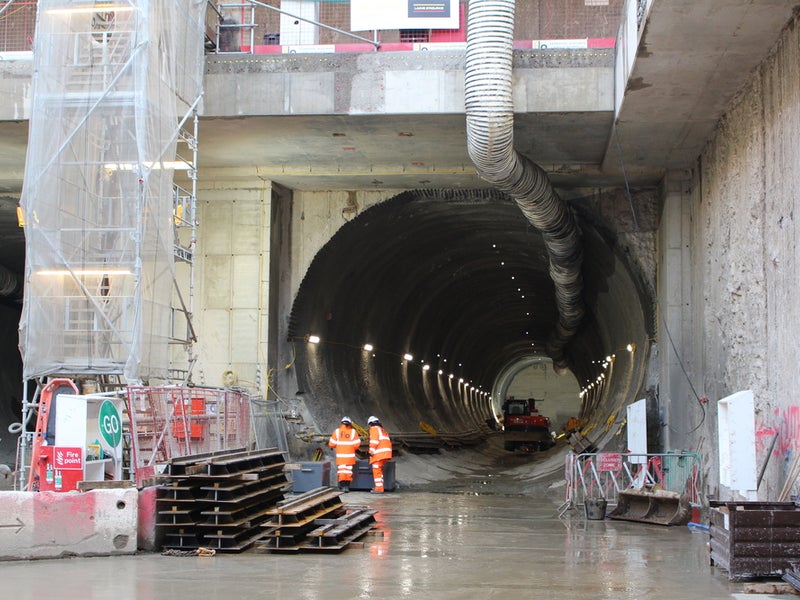London Underground’s Northern Line in the UK is being upgraded to increase passenger capacity and reduce delays. An extension of the line has also been proposed by Transport for London (TfL), which took over London Underground Ltd (LUL) in 2003.
A deep-tube line, the Northern Line is one of 11 lines on the London Underground, the oldest metro system in the world. At approximately 400km, what is commonly known as the Tube is one of the longest metros in the world.
The upgrade of the line is being carried out as part of the London Underground Major Regeneration Scheme to increase annual Tube journeys from one billion to 1.5 billion by 2020. The UK Department for Transport confirmed a £39bn ($61.4bn) investment for this scheme in 2008.
The London Underground Northern Line extension is expected to be completed by late-2021. A consortium of Ferrovial Agroman and Laing O’Rourke won the £500m design and build contract for the extension in August 2014.
London Underground Northern Line details and history
The Northern Line is one of the oldest and busiest tube lines on the London Underground network. The line covers 58km and includes 50 stations (36 of them below ground). The line connects the southernmost station Morden with High Barnet, Edgware and Mill Hall East in the north.
The line features a branching layout near Central London. Trains can run via either of its two central London branches, Bank and Charing Cross. The line is used by more than 900,000 passengers a day and more than 200 million passengers a year.
The Northern Line features the London Underground’s deepest station (58.5m below ground level) at Hampstead. Angel station features the longest (60m) escalators in Western Europe. The line also features the longest (27.8km) tunnel in the underground network which is located between East Finchley and Morden (via Bank).
The history of the Northern Line can be traced back to the City & South London Railway (C&SLR) between Stockwell and King William Street opened in 1890. It was the world’s first railway line to operate underground electric traction trains. The C&SLR was further extended from both ends to Clapham Common and Euston by 1907.
The C&SLR was integrated with Charing Cross, Euston & Hampstead Railway (CCE&HR) in the early 1920s. The CCE&HR, also known as the Hampstead Tube, running from Charing Cross via Euston and Camden Town to Golders Green and Highgate was opened in 1907. The integration involved the construction of a number of tunnels between the two lines.
The line was extended northwards to Edgware and southwards to Morden, along with the integration works. It was further extended northwards to High Barnet and to Mill Hill East as part of the London Passenger Transport Board’s (LPTB) Northern Heights plan initiated in 1935. It was named the Northern Line in 1937.
Details of London Underground Northern Line upgrade
The upgrade includes the introduction of a new signalling system and track renewal. The existing 50-year old fixed block signalling system is being replaced with the modern communications-based train control (CBTC) signalling system by which train movements on the line can be controlled automatically with real-time train running information on stations and trains.
Thales is providing its SelTrac CBTC system for the line upgrade. The new signalling system for the 8km section of the line between Highgate and High Barnet was successfully installed by July 2013. The signalling upgrade for the entire line was completed in 2014. A similar signalling upgrade was completed for London Underground’s Jubilee Line in 2011.
The line’s passenger capacity was increased by 20% when the entire line switched to the new signalling system. The extended line carries 11,000 more passengers an hour. The journey times on the line were also reduced by 18%.
Rolling stock refurbishment
The line is operated with a fleet of 106 new 1995 Stock type trains that entered service between 1997 and 2000 replacing the old 1959 Stock and 1972 Stock trains. The 1995 Stock trains were manufactured by Alstom and offer a maximum speed of 100km/h.
Alstom’s Morden and Golders Green Metro Traincare Centres undertook the works for upgrading the interior and exterior of the 106 trains, which included fitting wheelchair spaces and improving passenger information systems.
The modernisation project was completed in April 2015.
Northern Line extension
The line will be extended from Kennington to Battersea with two new stations at Nine Elms and Battersea Power Station. The extension is estimated to cost £1bn ($1.6bn).
The application for the planning permission to construct the extension was submitted in April 2013. The construction started in mid-2015 and is expected to be complete by late-2021.
Major works will include the construction of new headhouses at Kennington Green and Kennington Park and new cross passages at Kennington Tube station.
The main tunnelling works were completed in November 2017 following the development of the creation of two tunnels between Battersea and new shafts at Kennington Green and Kennington Park.
Concrete works around the western core were completed, while steelwork was started in August 2019 to create the eastern entrance envelope at the Battersea Power Station.
Fit out and mechanical and electrical works are being undertaken at the basement of the Kennington Green site. Power is live and equipment installation in ongoing at the Kennington Green and Kennington Park sites.
The line and levelling of the escalators at the NLE Nine Elms station were completed by Otis, while the lift installation was finished by Kone by March 2020.








